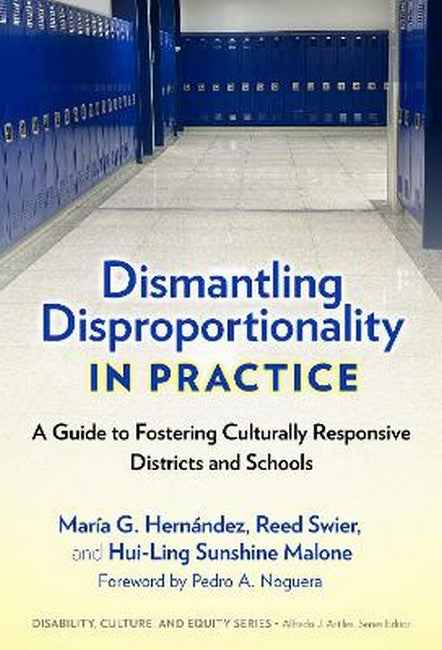Maria G. Hernandez has over a decade of experience partnering with pre-K-12 educators, providing technical assistance and training to develop culturally responsive education systems that address disproportionality and equity. Reed Swier is a former elementary teacher and administrator currently providing culturally responsive training and technical assistance to educators and district leaders. Hui-Ling Sunshine Malone is an educator, researcher, consultant, scholar-activist, and an assistant professor of education at the University California, Santa Barbara.
Request Academic Copy
Please copy the ISBN for submitting review copy form
Description
Contents Foreword ?xi Preface ?xv Acknowledgments ?xvii 1. ?Introduction ?1 The State of the Work ?4 So What Can This Active Equity Work Look Like? ?5 Moving Systems ?6 Setting the Table for Systems Work: Processes for CR-SE Engagement ?7 What to Expect in the Proceeding Chapters ?14 2. ?Authentic CR-SE: Tackling Beliefs Through Self to System Reflection and Action ?15 Why Culturally Responsive-Sustaining Education (CR-SE)? ?15 Foundational Understandings (Preconditions) Critical to CR-SE and Self to System Work ?17 From Foundational Understandings to CR-SE Self to System Application ?24 Connecting Self to System ?34 Critical Questions ?35 3. ?Understanding the Root Cause Analysis Process ?37 Framing the Importance of the Root Cause Process ?40 Preconditions for Root Cause Analysis ?40 The Root Cause Analysis Process ?45 Root Cause Analysis Tools ?46 Promising System Shifts ?56 Conclusion ?58 Critical Questions ?59 4. ?Applying an Inquiry Approach: An Example Root Cause Analysis Process ?61 Garner Central School District: Applying a Root Cause Analysis ?63 Grounding the Work in a Moral Imperative ?64 District Data Analysis ?68 Examining Key Policies and Practices ?77 Policy and Practice: Code of Conduct and Discipline Referral Form Examples and Advanced Placement, Honors, International Baccalaureate, and Gifted and Talented Form ?85 Examining Staff Beliefs ?97 Getting to Root Causes ?99 Action Planning After a Root Cause Analysis ?103 Directions as You Move Through Action Planning ?112 Action Planning Tip ?112 Avoiding Detours: District Successes and Challenges ?113 Conclusion ?115 Critical Questions ?115 5. ?How Can Districts and Schools Leverage Student Voice in Addressing Disproportionality? ?117 (Re)Defining Disproportionality ?118 Solidifying Sustaining Youth-Adult Partnerships ?118 Establishing the Partnership ?120 Establishing a Contact Zone ?124 Political Education ?128 The YPAR Project ?128 Conclusion ?138 Critical Questions ?139 6. ?Conclusion ?141 From Self to System ?142 Commitment to Doing the Work: Voices from CSC CR-SE Work ?144 District Example Building Educator and Systemic Capacity ?148 Conclusion and What Is Next? ?150 Glossary ?153 Endnotes ?155 References ?157 Index ?163 About the Authors ?171

